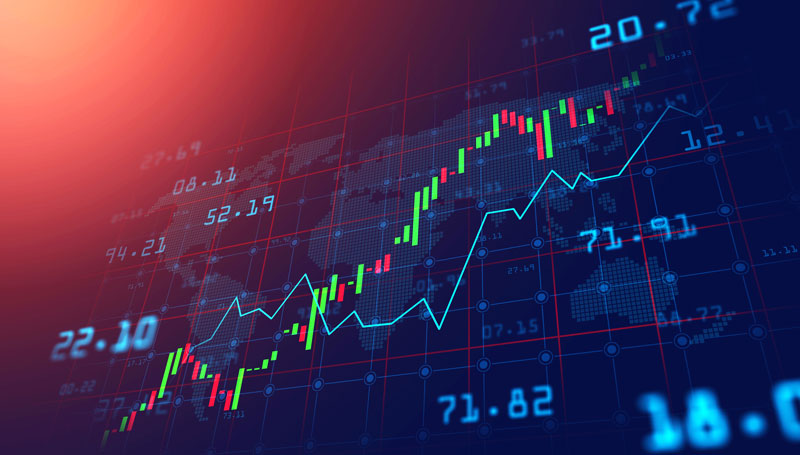

15.08.2019 – Daily report. Bloodbath in global trade: Prices in New York and Frankfurt had collapsed on a deep red Wednesday on the way south. On Thursday, the DAX first tries to recover. But this collapses after a short time. No wonder: fears of recession and China are weighing on. Perhaps a bunch of important US data in the afternoon will bring relief.
No DAX recovery
That was it at the Frankfurt Stock Exchange: Yesterday, the DAX broke through the 200-day line at 11,493 points, the last time at 11,648 points. Some optimists were swept out of the market with a full minus of 2.2 percent. Most recently, the leading German index was down 0.6 percent to 11,423 points. Will the strong hands soon be reaching out again? The signs are bad at the moment, but unexpectedly often comes.
Trump links Hong Kong to customs dispute
In Asia, trading was mixed in the morning. The Nikkei index lost 1.2 percent to 20,405 points. Here, the strong yen depressed sentiment. The Chinese CSI-300, on the other hand, rose by 0.3 percent to 3,694 points. And this despite the fact that US President Donald Trump now officially linked the protests in Hong Kong with the tariff dispute. Via Twitter he announced that Beijing could only expect an agreement in the trade dispute with the USA once the problem with Hong Kong had been solved. After all, Trump proposed a personal meeting to the Chinese head of state Xi Jinping for discussion. So not all doors have been slammed yet.
New York on a descent
The evening before, the hope of an agreement with China had not long supported prices in the USA. The leading indices all fell by around 3 percent. The Dow Jones Index closed at 25,479 points, the S&P 500 bid farewell at 2,840 points and the Nasdaq Composite closed the day at just under 7,774 points. Volatility rose sharply in the drama of the past few days, as did the price of oil. Due to impending price increases before the Christmas business, Washington had postponed the introduction of already announced punitive tariffs on Tuesday. But then the fear of recession raged again – for the first time since the collapse of Lehman Brothers, the bond market showed an inverse yield curve.
Inverse yield curve – flight to US Treasuries
The yields on long-dated bonds fell briefly below those of short-term bonds. And for the first time since 2007. This so-called “inverse yield curve” is a rare phenomenon and a signal of recession. This means that the yield on ten-year securities is lower than that on two-year securities. Longer-dated bonds usually yield higher yields than shorter-dated bonds. After all, the risk is more difficult to assess in the long term and must therefore be remunerated more heavily. More and more investors therefore want to park money in the long term, even though they hardly receive any interest – and they simply do not want to invest in the short term. For example, the yield on the 30-year US government bond fell below two percent for the first time. This means that all US securities are now below the Fed’s key interest rate. By the way, gold is also more expensive than it has been for about six years.

Source: Bloomberg
This is what the day brings
In the afternoon it gets really exciting when you trade CFDs or are active online in stock trading. The calendar is full to bursting. As always, you will find all important dates here: Market Mover
At 14.30 hrs, US productivity ex agricultural will be on the agenda for the second quarter. (1st publication)
At the same time, the weekly first US applications for unemployment benefits are being received.
Ditto the Empire State Manufacturing Index August.
Also US retail sales in July.
And also the Philly Fed Index August.
The Federal Reserve then reports data on US industrial production and capacity utilisation in July at 3.15 pm.
At 4 p.m., US inventories in June will finally run through the tickers.
So there’s a lot for CFD traders to do in the afternoon. The Bernstein Bank wishes successful trades!
Important Notes on This Publication:
The content of this publication is for general information purposes only. In this context, it is neither an individual investment recommendation or advice nor an offer to purchase or sell securities or other financial products. The content in question and all the information contained therein do not in any way replace individual investor- or investment-oriented advice. No reliable forecast or indication for the future is possible with respect to any presentation or information on the present or past performance of the relevant underlying assets. All information and data presented in this publication are based on reliable sources. However, Bernstein Bank does not guarantee that the information and data contained in this publication is up-to-date, correct and complete. Securities traded on the financial markets are subject to price fluctuations. A contract for difference (CFD) is also a financial instrument with leverage effect. Against this backdrop, CFD trading involves a high risk up to the point of total loss and may not be suitable for all investors. Therefore, make sure that you have fully understood all the correlating risks. If necessary, ask for independent advice.
